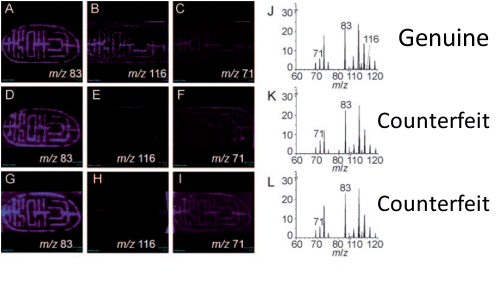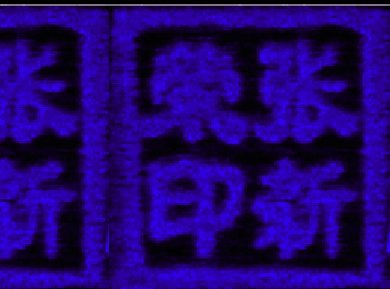Imaging Mass Spectrometry for Analyzing Art Works
Works of art are valuable and often also very delicate. Their restoration and conservation and their dating and authentication require sophisticated technical methods. A team led by Sichun Zhang at Tsinghua University in Beijing has now developed a new imaging mass spectrometric process to identify paintings and calligraphy without damaging the art pieces. As the scientists report in the journal Angewandte Chemie, the secret to the success of this method is a low-temperature plasma probe that gently removes molecules from the surface of the art works.
Mass Spectra of Pixels
In mass spectrometry (MS), the substance to be examined is brought into the gas phase and ionized (electrically charged); the ionized particles are then accelerated through by an electric field. Within the analyzer, the particle beam is separated according to the mass and charge of the particles. Imaging mass spectrometric techniques have now also been developed. In this process, the surface of a sample must be scanned and a mass spectrum obtained at every pixel. This technique requires special ionization methods that allow the samples to be examined directly. However, most of the existing imaging mass spectrometric techniques work under vacuum conditions, which limits the size of the samples to be analyzed. In the electrospray technique, solvent molecules carry analyte molecules away from the surface and ionize them.

Damage Limitation
Delicate works of art such as paintings can however be contaminated and thus damaged by the solvents. The Chinese researchers have now introduced a new variety of imaging MS that operates with a low-temperature plasma probe. This probe essentially consists of a fused capillary and two electrodes made of aluminum foil, to which a very strong alternating voltage is applied. Inside the capillary there is helium gas; the high electric voltage induces what is known as a dielectric barrier discharge in the helium. This means that the helium atoms are in the form of separated ions, electrons, and exited atoms, a state known as a plasma. The temperature of this plasma reaches only 30 °C. The helium plasma leaving the capillary ejects molecules from the surface of the sample and ionizes them. This does not damage valuable works of art.
Preventing Fraud
The scientists used this new technique to analyze seals, which are stamped impressions used as signatures and means of authentication on Chinese paintings and calligraphy. The team was able to use their new microplasma probe to reveal variations in the composition of the ink of individual seals, making it possible to differentiate between authentic and inauthentic seals.
- Imaging Mass Spectrometry with a Low-Temperature Plasma Probe for the Analysis of Works of Art
Y. Liu, X. Ma, Z. Lin, M. He, G. Han, C. Yang, Z. Xing, S. Zhang , X. Zhang, Angew. Chem. Int. Ed. 2010.
DOI: 10.1002/anie.200906975 - Y. Liu, X. Ma, Z. Lin, M. He, G. Han, C. Yang, Z. Xing, S. Zhang , X. Zhang, Angew. Chem. 2010.
DOI: 10.1002/ange.200906975




